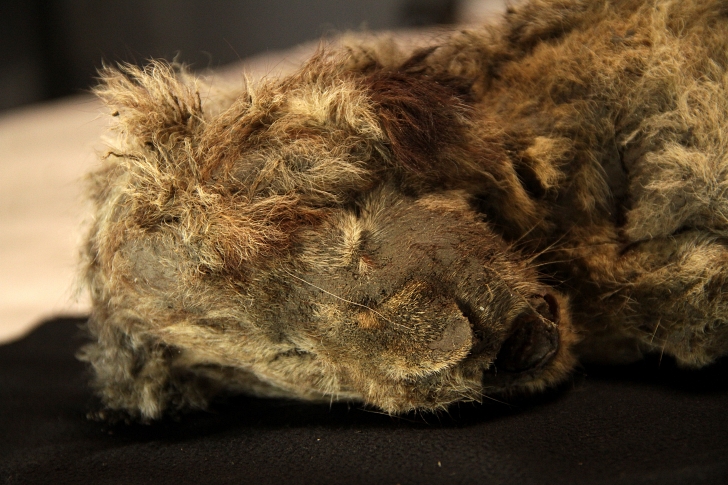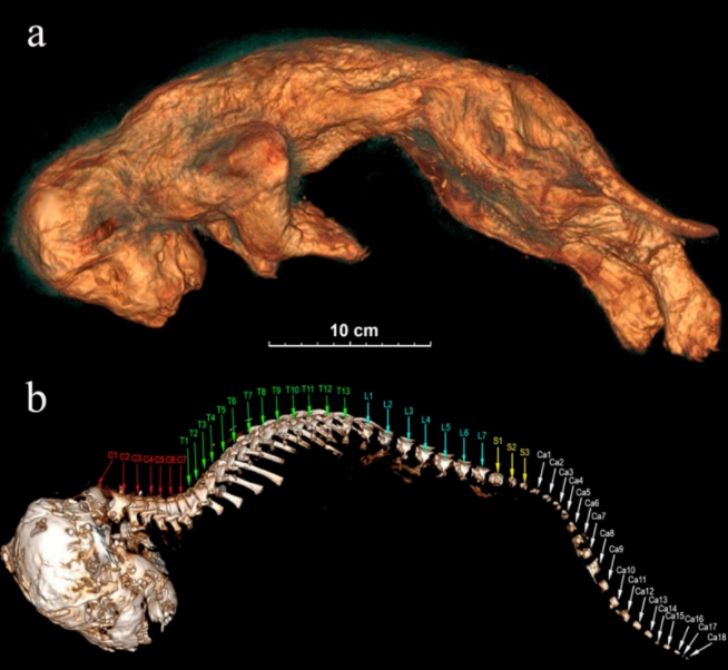Extinct Cave Lion Cub from Thousands of Years Ago Found Perfectly Preserved in Siberia
The cub in some ways looks very lifelike.
An ancient lion cub was uncovered in Siberia in near-perfect condition and now researchers have released the details about this incredible find. The cub was discovered in 2018 and has been given the nickname of Sparta. This small, female cub has been radiocarbon dated to around 28,000 years ago, and her fur and internal organs are perfectly preserved. The cub represents a growing number of intact, prehistoric animal remains found in Northern regions, particularly in Russia.

Scientists from around the globe contributed to a new study published in the scientific journal, Quaternary, in July of 2021. The paper examines two ancient cubs in detail and includes scans of Sparta, who was around 1-2 months of age when researchers believe she died suddenly.
Mud matted into her otherwise unflawed fur suggests a landslide at one point covered her body. Her hind legs and tail were flattened over the thousands of years that she was lying nearly untouched but her teeth, organs, and even her little whiskers remain intact. Her organs became mummified in the cold environment, leaving a record of her life. However, the cause of the cub’s death is as yet unknown.
Between 2015 and 2018 4 ancient cave lion cubs were found in Sakha Republic in Yakutia near the Indigirka River in Siberia. The cubs are unrelated and each have different radiocarbon dates when tested.

According to Love Dalen, one of the researchers on the project, it is possible that the cubs died from falling into a crack in the permafrost, something which was a real risk to small animals. Dalen said, “Given their preservation they must have been buried very quickly. So maybe they died in a mudslide, or fell into a crack in the permafrost. Permafrost forms large cracks due to seasonal thawing and freezing.”
The cave lion species, known officially as Panthera spelaea, was one of many animals that somehow adapted to life in much colder environs than we have in most parts of the world today. The location of the cubs is part of the Pleistocene Siberian Arctic zone, an area of Siberia that was even colder in the Pleistocene era than it is today. The area was and is also subject to continuous nights in winter, making life difficult during these long nights.

Whereas wooly mammoths and other creatures from this region and era show clear signs of adaptation (like heavy fur and thick skin) it is unknown exactly how this species adapted to the harsh conditions since the parts of the world where lions live today are usually warm.
Comparisons with Boris, a male cub found in the same location, show the same mud-encrusted fur, potentially from another mudslide. The mummified body of Boris was less flattened than Sparta’s, however part of his tail was missing. By contrast Sparta’s corpse is completely whole.
While the two cubs were roughly the same age when they died, radiocarbon dating places the mummy of Boris at around 43,000-years-old, many thousands of years older than Sparta. Boris was discovered in 2017 after a licensed mammoth tusk hunter found the cub in a shoreline denudation of the Semyuelyakh River. In 2018 Sparta was found 50 feet away from where Boris was found.

You can see more about this lion cub (and where she was found) in the video below.
Here is a short video clip put together by @CNN that shows how the cub was recovered from the permafrost.
She didn't exactly exactly emerge yelling "I AM SPARTA!", but close to it 😅
Paper by Boeskorov et al. here:https://t.co/yLLaWK3Sxuhttps://t.co/sdvb7fZHmU
— Centre for Palaeogenetics (@CpgSthlm) August 6, 2021
SKM: below-content placeholderWhizzco for DOT

